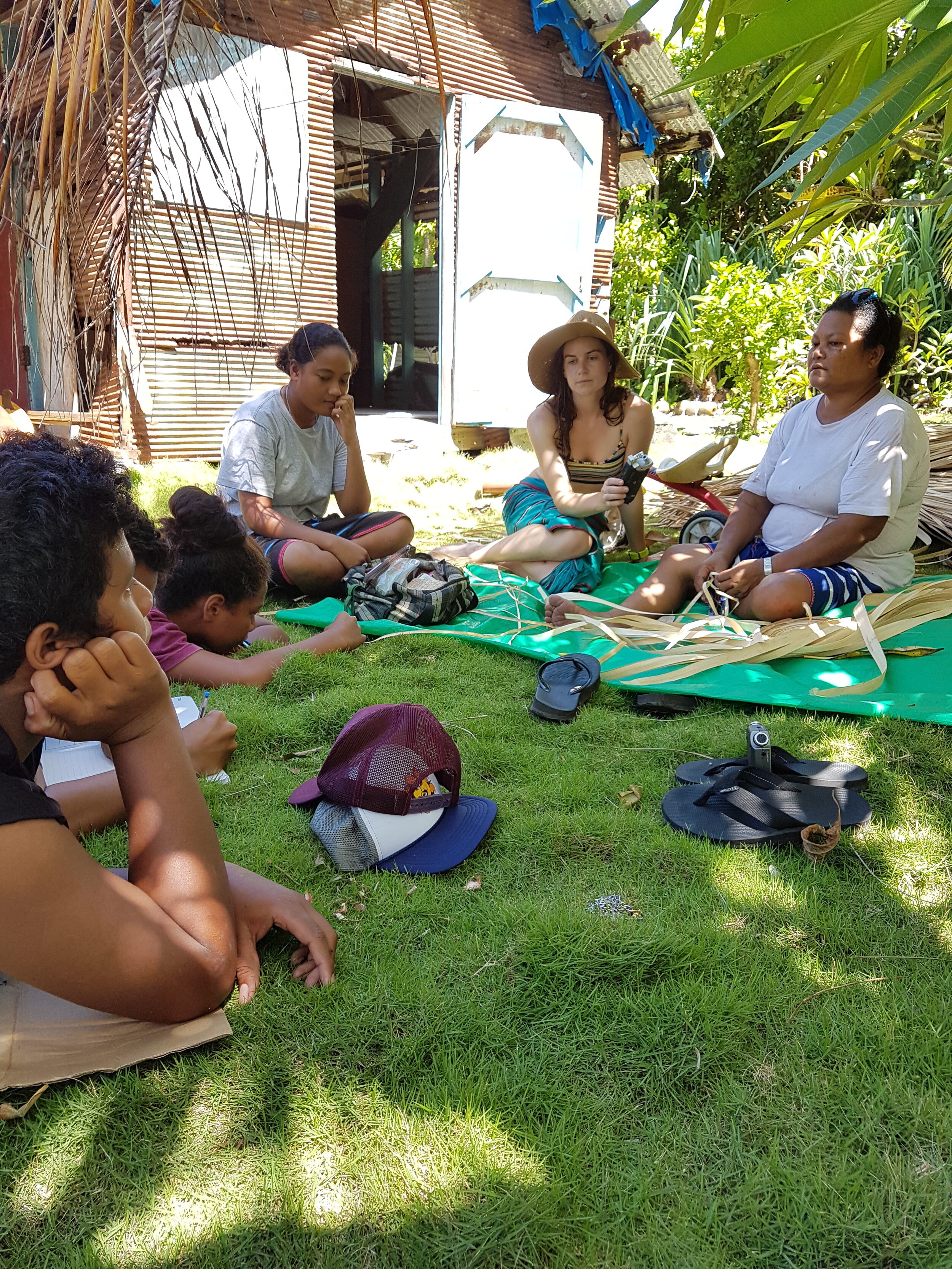
Pesenti telling a story on Falalop, Ulithi

Kelsey asks Pesenti a question over the Zoom recorder. The young people listening are able to act as interpreters

Chief Isaac acts out his story for the youth of Asor Island

Naomi and Micah laugh at one of Chief Isaac's stories on Asor Island, Ulithi Atoll

Madeline rests her head as she listens to Stevana Dolmar tell the story of Halad and Halalwech.
Each island has its own version of many of these stories, as well as stories that belong just to that island

Kelsey records a multi-storyteller story inside the church on Mogmog Island

Telling stories in Mogmog Church, Ulithi, June 2018.
The church is not a traditional location for Ulithian storytelling, but the sound of the wind on the beach would have interfered with the audio recording

John Rulmal (Junior Magul) cracks a laugh as he listens to his aunts story - part of it he has never heard before.
He initiated this storytelling project to reconnect local youth with their culture and traditions

Lourdes Yigwechog curiously inspects the Zoom recorder as Kelsey prepares to record

Ulithi youth leader Milo Tasopolu and Youth Project participant Ali enjoying a story

A young girl from Mogmog listens to Lourdes, Patricia and Maria - elder women from her island - all recount the same story and compare their different versions

We chose to use minimal recording equipment - an external Zoom field recorder, rather than a clip-on microphone or boom pole, that might inhibit or distract the storytellers

Henry, from Mogmog Island, is known as 'the walking dictionary'. Mogmog has remained the most traditional of the inhabited islands on Ulithi, and has the most detailed versions of the stories.

Juliana weaves as she tells a story. The lengthy process of weaving a lavalava - or Hoow - provides a perfect opportunity for storytelling.
Young people learn not only by listening to the stories, but also by observing elders performing skilled work

Juliana weaving a Hoow (lavalava), Asor Island, Ulithi Atoll

Clotilda Legdar from Fedrai Island telling the story of Filtey, and the creation of Ulithi Atoll

Involving the youth is essential to reviving the tradition of storytelling.
These stories are being told less and less as islanders gain access to technology like tablets. On more remote atolls like Woleai, traditional evening storytelling is still very much alive, and the social structures which support environmental stewardship are more intact than on Ulithi Atoll

Stevana becomes more animated as she recounts the tale of Lemachawolchawol, a mnemonic for learning the name of the islands on Ulithi Atoll

Stevana Dolmar of Asor listening to a question about the story she just told

Kelsey and Stevana share a laugh with a handful of the outer island youth as they gather around her to listen.

From left to right, Micah, Allie, Ginger transcribe and translate one of the stories, with Peace Corps English teacher, Steve Guertler.
Having spent two years living on Ulithi, Steven is able to help with the translation

Naomi, from Mogmog Island, Ulithi, concentrates as she transcribes a story from the audio recording.
Ulithian spelling is still in the process of being standardized, which makes this an extra challenging undertaking.

Making audio recordings of the translated stories. Alessio narrating the tale of Buuch and Repiy.
In the story Buuch outsmarts a “Legaslap”, a kind of ogre. According to John Rulmal, “This story’s message is that uninhabited islands which we rely on for food should be used carefully with respect and fear of the unknown spirits that dwell on them, This teaches youngsters to respect both the creative and destructive powers of nature.”























